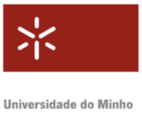Prospective survey
A questionnaire will aim at specifying the expectations of future senior learners with regard to the certificate, in terms of content and teaching methods, but also in terms of institutional functioning. A first version of the tool has been developed in French in line with the five W's and two H's method of information gatherinf (What, Why, Where, When, Who, How, How much).
ULille started the data collection phase; the next steps of activity 1 are to:
- Continue the data collection in France in order to reach a sample size in line with the size of the estimated parent population (from which a sample is obtained);
- Perform local data collection in the countries of the partners involved in the tarsk which requires:
- Translation into the national languages;
- Analysis of the set of questions in order to determine which questions are relevant or not in each local context, and possibly to consider new questions adapted to these contexts;
- Carry out a statistical analysis of the data. Inferential statistics will infer general properties of the parent population at the local level. They can also draw conclusion beyond the environment specific to each university;
- Analyze the results with reference to the literature;
- Compare the expectations of the respondents to the educational and institutional potentialities of each university.
The considered data collection modalities are the following: (The estimated sample will be 150 questionnaires at each institution.)
- At ULille: An online survey;
- At UMinho and UWr: an online survey and computerized collection of data with an interviewer;
- At UMinho: an online survey with hard copy, which will be printed on paper in order to transmit it by non-digital means as well.
The bibliography, not specific to activity 1, will be shared and will be the subject of points in progress. The other partners can consult the experts in each field in case of difficulty in understanding.
How is it going to help to reach the project obectives
This activity is a crucial initiative setp of the project, as this will be the key to identifying the needs for teaching older people about ageing at the university level, as the literature on this is very sparse. A questionnaire is necessary because, as far as we know, there is no literature directly relevant to this teaching topic. The questionnaire will provide information about who will be interested in the training, what training topics are the most interesting for the respondents, what teaching conditions should be offered to align with the expectations of the audience, the factors that will motivate participants to enroll in such a course and those that will be dissuasive.
The aim of this study is to understand the initial expectations of potential learners in the framwork of a prospective approach. An online questionnaire is a very convenient way of collecting information from a large number of people within a short period of time and "close-ended" quesitons facilitate subsequent analyses. Moreover, the respondents are more likely to answer truthfully. However, the level of computer literacy of the potential learners does not appear to be the same in the four countries, hence the additional use of other data collection methods by some partners. As the expected number of learners for the pilot course is very likely to be reached, it is necessary to underline that the goal of activity 1 is not to determine the general adherence of senior citizens to the training, and moreover the survey will not use the quota sampling method. The objective is to ptovide more cyclical information and to be able to make comparisons between countries to determine a priori, whether each university can implement the course in similar conditions.
Expected results of the activity
The general assumption behind this project is that 3AC will contribute to helping older people to remain active and healthy. The questionnaire in activity 1 will not provide relevant arguments regarding this assumption and it is not hypothesis driven. It mainly studies a priori opinions and behavioral intentions. In fact, the information provided will primarily be of a practical nature in order to guide the choices and the modalities of implementation in activity 2 and in the further development of a comprehensive training course. Nevertheless, it is probable that questions related to motivational and dissuasive factors would be interpreted in reference to conative theoretical models. The interests of the comparisons between universities will be limited; in order to avoid frustrating potential learners who have answered the questionnaire, only the topics that can be taught in a given university will appear in the corresponding questionnaire. On the other hand, some differences between the four unviersities in the collected responses may not be explained merely by material considerations (e.g. access to the campus by public transport); they may also reflect the influence of sociological and cultural factors, which should be carefully analyzed.



